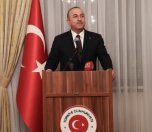Click to read the article in Turkish/Kurdish
In its written statement released today, the Human Rights Watch (HRW) has expressed that the Turkish Armed Forces (TAF) “appear to have failed to take necessary precautions to avoid civilian casualties” during air strikes and artillery fire.
Asserting that 26 civilians, including 17 children were killed in two air strike and one artillery fire launched at the end of January, the HRW featured statements of survivors and said that the civilian killings may be unlawful.
323 thousand civilians live in the region
According to stats by the United Nations, 323 thousand people live in Afrin into which Operation Olive Branch was commenced on January 20 by the TAF in cooperation with the Free Syrian Army (FSA).
Stating that the Turkish-Syrian border remains closed to everyone seeking to cross except for urgent medical cases, the HRW said, “Since the start of the offensive, 150 civilians have been killed and hundreds more injured, according to the Kurdish Health Council, a local PYD-affiliated body.
Three days, three bombardments
The HRW stated that it investigated three attacks launched on January 21, 27 and 28. Within the scope of the investigation, Human Rights Watch interviewed seven witnesses, including both first responders and victims, reviewed photographs they provided, and carried out extensive analysis of satellite imagery of the attack sites.
HRW’s statement that includes also eyewitnesses’ statements is as follows:
Eight civilians including five children were killed on January 28 On January 28, at approximately noon, Turkish armed forces dropped four munitions in an aerial attack on a cluster of tents where the Kinno family lived near the village of Kobla, also known as Kupeli/Jalbal, in Afrin district, according to four witnesses. At least eight civilians, five of them children, died in the attack. No fighters were killed in the attack, the witnesses said. Abdullah Kinno, a survivor of the attack who was wounded, told Human Rights Watch that the family had fled violence in another area to settle in Kupeli, and that he was in the tent with some of the members of his family when the first rocket hit: There was an airplane, we could hear it inside the tent. Then the first rocket hit beside us. Eleven of us died. The youngest was 4 months old. His brain was in my hand. The explosion was huge, there was dust everywhere and everywhere I looked I saw my children strewn around me, dead or injured. My entire life in pieces around me. Kinno and his son both said that three of the four munitions fell on the tents, each approximately 15 meters apart, and the fourth fell on the family’s car. Both said that there were no military activity or objects in the vicinity and that it would have been clear that there was civilian activity outside the tents: There was no military target whatsoever. Nothing, nothing. We used to say strikes were accurate, but they must have seen the goats and the children playing outside. I am surprised, shocked. The entire population is shocked. These are children. Dr. Juan Mohammed. from Afrin Hospital, said that responders visited the site shortly after the attack: The stone has melted there, the hit was very strong. The stone itself was reduced to dust. There were tents and a few houses that were rubble, and we don’t know who they [the dead] are. We couldn’t identify the remains as they were in pieces. The only one we identified was because of clothes and markings; there was a hand here and a foot there, and not much left of the bodies. He said there were no military targets in the vicinity of the strikes as far as he could tell. Human Rights Watch reviewed satellite imagery recorded December 1, 2017, and identified at least five semi-permanent, tent shelters consistent with a civilian encampment. Satellite imagery recorded on the morning of January 29 shows the complete destruction of all shelter structures and impact craters consistent with the detonation of at least four air-dropped munitions. Human Rights Watch also reviewed photographs taken at the site following the airstrike by first responders from the Kurdish Red Crescent and identified uniquely matching features in satellite imagery recorded on January 29, 2018, confirming the date and location of the photographs. The photographs show destruction of buildings, small vehicles and farm equipment across a large area, as well as personal effects including the remains of a child’s bicycle. Based on the photographs and satellite imagery, this encampment was in an isolated location, with no apparent military positions or structures in the vicinity, consistent with the survivors’ accounts. |
Seven members of a family were killed on January 27 First responders and doctors said that at 2 a.m. on January 27, Turkish forces shelled a house in Ma’batly, in the Afrin district, killing seven members of a displaced family. No fighters were killed in the attack, they said. An activist who had visited the site after the attack said that three shells fell on houses in the area. One had fallen directly in the house occupied by the displaced family, killing six people and injuring one, he said. He provided Human Rights Watch with photos he took of the room, which show significant damage to a house in what is clearly a residential area. Human Rights Watch has not been able to identify any military targets in the vicinity of the attack. Dr. Mohammed, who received the injured and dead bodies at Afrin hospital, said that first responders initially recovered four bodies, and found two more the next day. One daughter, 19, had escaped with minor wounds, but when the hospital staff told her the family had died, she died of a heart attack, he said. |
At least 11 civilians including three children were killed on January 21 However, satellite imagery Human Rights Watch reviewed shows a large security trench and earthen berm running along the northern side of the farm, which is part of a larger network of security architecture east of the town of Afrin. After reviewing the satellite imagery, Human Rights Watch was unable to reach the witnesses to request more information about the use of the trench or to determine whether the site had been used for a military purpose in the past. A woman who was at the poultry farm with her husband and seven children said they were working on the farm when the strike hit: I was very scared, I knew I was going to die. The rockets were hitting, they kept hitting. I was looking for my daughter and when I saw her lying on the ground, I thought she was dead. I carried her all the way across the rubble. My house was destroyed, and all my children’s things lost – there is nothing. Even the clothes were burned. The woman said that her 7-year-old son was killed in the attack and that she and her 20-year-old daughter were injured. They were taken to Afrin hospital for treatment. Henif Hassan, a first responder with the Kurdish Red Crescent, said that the group received a notification of the attack between 1 and 2 p.m.: First, we found a boy, about 11-12 years old. He was injured – but capable of walking. We asked him if anyone else was around but he wasn’t able to talk at first. We heard a faint sound coming from under the rubble. The child we pulled out, Ismail, was with me in the ambulance, and he told me what happened. He said there were three strikes from an airplane. They work on the farm three to four days during the week. They gather the eggs, carry them to trucks to be sold in the market. Both the woman and Hassan said that there was nothing to indicate any military presence or operational facilities in the vicinity of the farm. Hassan said: What we saw when we arrived was horrible, indescribable. It was a big farm, one building, entirely razed to the ground. It’s a plain area, on one side there are cypress trees, and on the other end wheat fields. There was no indication that there had been a military or armed presence. Nearby there were two Hyundai pickup trucks that carried eggs, they were hit too. Human Rights Watch has reviewed satellite imagery from January 29, matching the location of the strike with photos provided by witnesses and first responders. The satellite imagery corroborated the information that the farm was hit with at least six air-dropped, precision-guided munitions that destroyed all but one building unit in the farm complex. The satellite imagery also shows that the complex is located immediately next to a large security trench and earthen berm that run along the northern side of the complex, forming a larger network of security architecture east of the town of Afrin, reflecting the possibility of a nearby military target. |
(AS/TK)




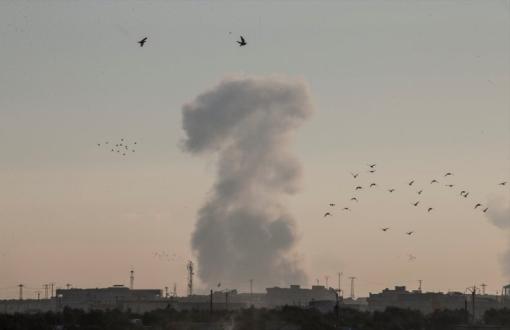
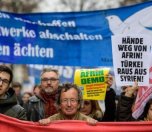
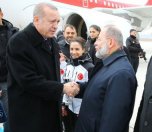
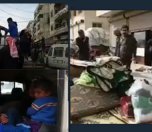
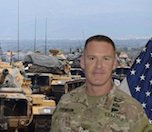
132.jpg)

